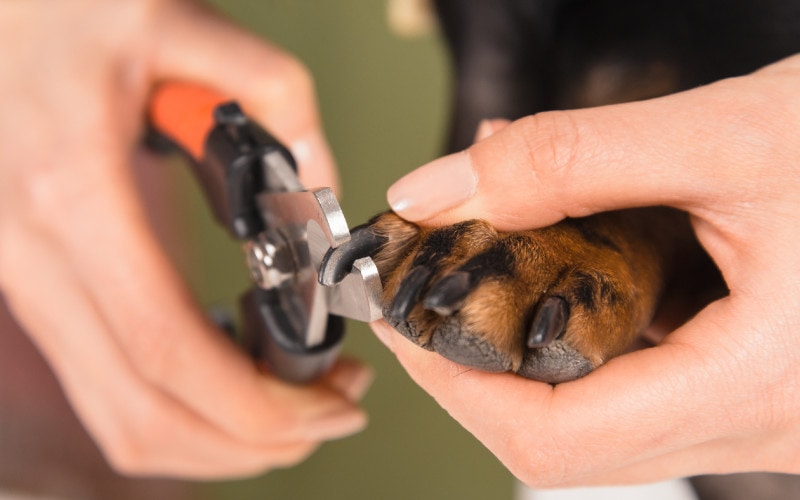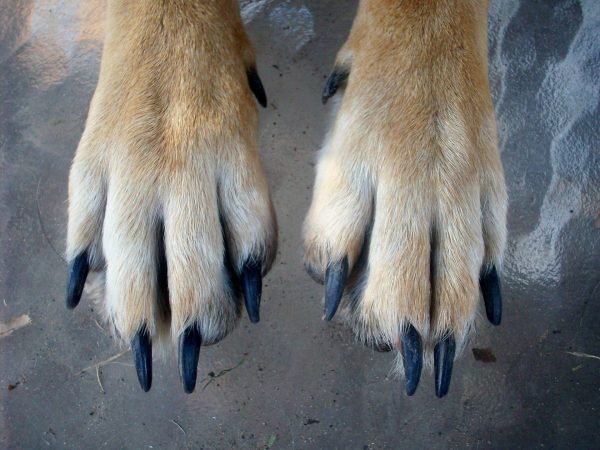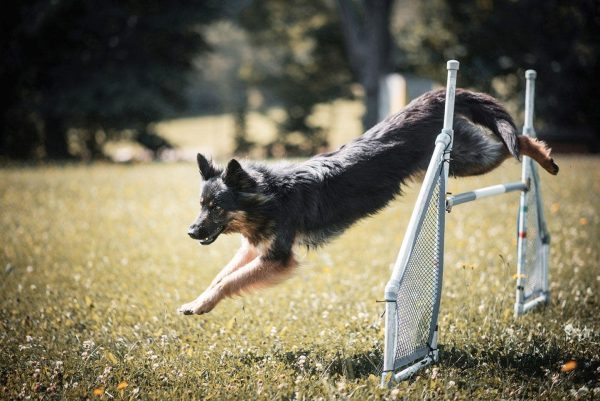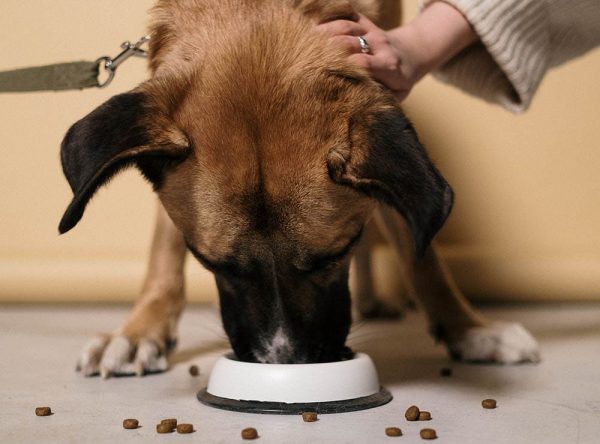Having a dog is undoubtedly a big responsibility, with many tasks and care that must be provided. One of the most important is cutting your dog’s nails, which needs to be done regularly.
If you let your dog’s nails grow too long, they can cause what’s known as a “splayed foot.” A splayed food can cause traction problems, change the way they bear weight, and potentially damage the foot.
To avoid these problems, it’s best to cut your dog’s nails regularly and keep them short. If you’re new to being a pet parent and aren’t sure how and when to cut your puppy’s nails, read on. We have the information below and details about the other problems overgrown nails can cause.
What Happens if I Never Cut My Dog’s Nails?
Veterinarians consider nail cutting at the top of the regular care and grooming list. If they grow too long, nails can cause your dog a great deal of pain. As your dog walks, long nails can change the weight-bearing pressure on its feet and legs. This extra pressure can contribute to joint degeneration.
If left uncut for a long time, your dog’s nails will curve under its paw and pierce the skin. Ingrown toenails are very painful and lead to infections in the toes. Longer nails can also snag on carpets and floors or when out exercising, removing the nail’s outer keratin casing and exposing the “quick.”
The quick is the soft cuticle part of a dog’s nail that contains blood vessels and nerves. If the quick is exposed, it can lead to other injuries and infections.
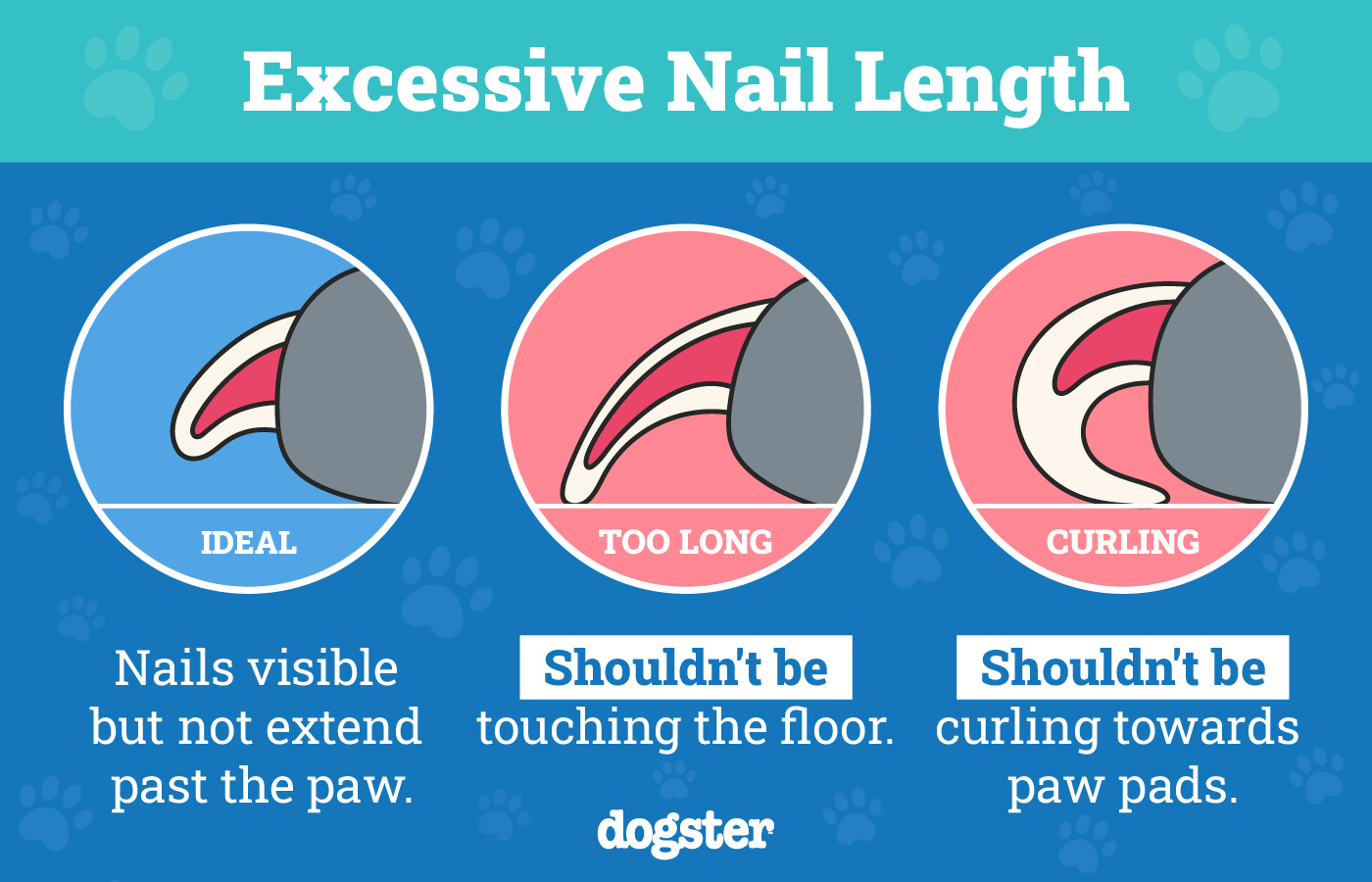
How Often Do Dog’s Nails Need to Be Cut?
Veterinarians recommend cutting your dog’s nails every 3 to 4 weeks. Some dogs might need their nails cut more frequently, while others might need theirs cut less often. A good rule of thumb is to cut your dog’s nails often enough that you never hear them “clicking” on your floors.
Remember to keep a special eye on the dewclaw nails if your dog has them, as these are more likely to be missed.
If you’re uncertain about trimming your dog’s nails or are uncomfortable doing so, consult a veterinarian for guidance.
If you need to speak with a vet but can't get to one, head over to PangoVet. It's our online service where you can talk to a vet online and get the advice you need for your dog — all at an affordable price!

How to Cut a Dog’s Nails
Cutting your dog’s nails takes a small amount of skill and lots of patience. With practice, it will become much easier. Here’s how:
- Push their fur or hair out of the way to expose each nail.
- Holding the paw, start with one nail at a time.
- Look for any white nails that you will be able to see the pink quick through. This will give you a guideline for how short to cut the nails. Stay a few millimeters away from the quick. In black nails, a general guide is that the tip on the nail will be in a straight line from the pad.
- Cut off the tip of each nail straight across at a 45-degree angle
Although it’s an extra expense, in some cases, it might be best to let your groomer or vet tech cut your dog’s nails. They have the correct tools and the experience to do it well and prevent painful mistakes.
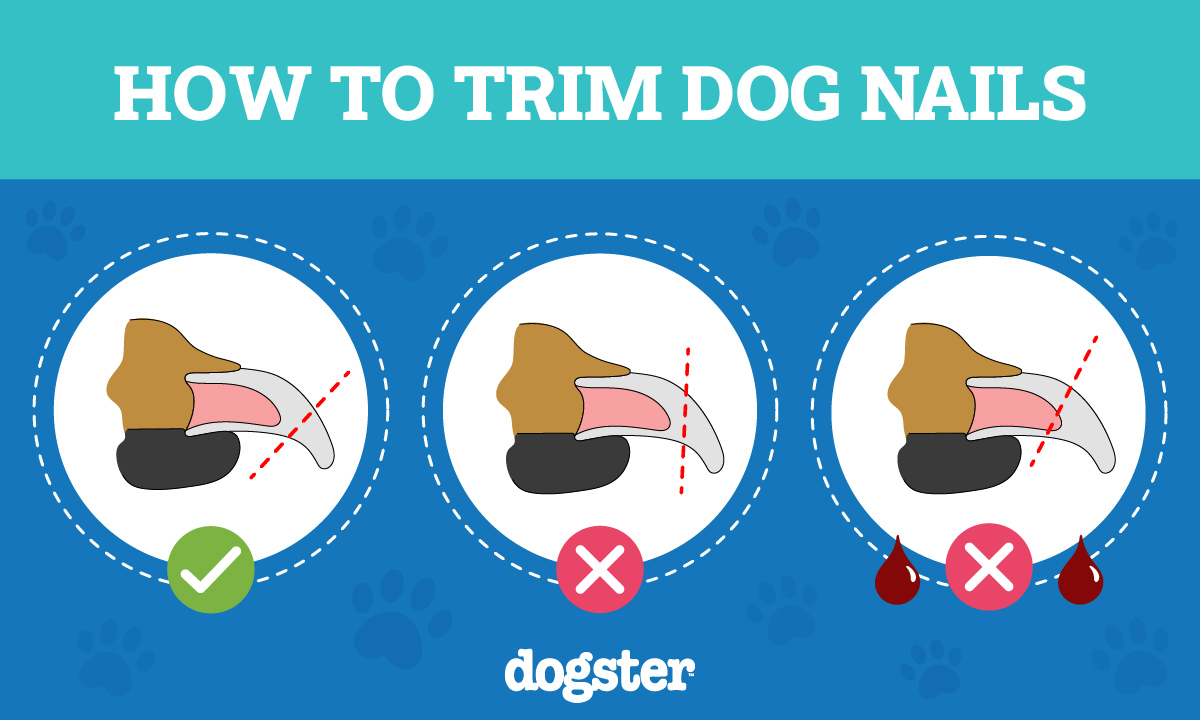
Can a Dog Wear Down Its Nails Naturally?
Some dogs genuinely hate having their nails cut. If that’s your dog, some of the natural nail-cutting methods below might be helpful.
Walk, Bike, or Jog with Your Dog on Rough Surfaces
Walking your dog regularly on the sidewalk or any other rough surface is a great way to keep their nails short. The rough surface will naturally file their nails down, so you can cut them less frequently.
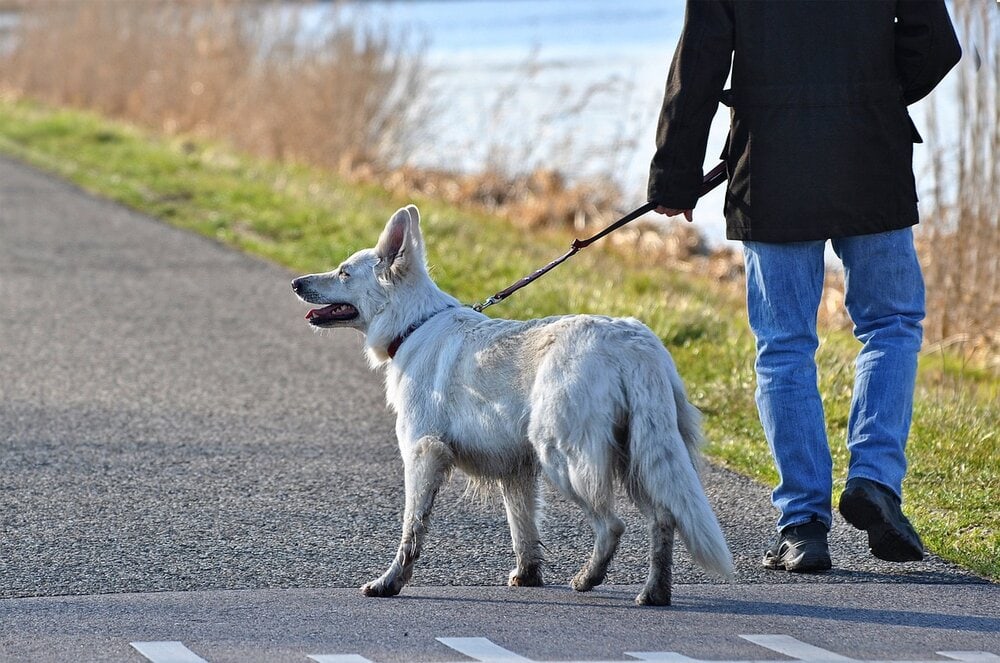
Let Your Dog Dig
If your dog loves to dig, give them a special area to dig to their heart’s content. This will wear down their nails and reduce the need to cut them.
File Your Dog’s Nails with a Doggy Emery Board
An Emery board (for dogs) can be used on your dog to keep its nails short. However, you’ll need to do this often, probably every other day.
Use a Dremel Filing Tool
If your dog is OK with the sound, using a Dremel tool with a filing attachment works exceptionally well for filing its nails. You do need to be careful, however, and have a dog that will hold still so that you don’t hurt them while filing. Dog-friendly nail grinders are now available and are safer options.
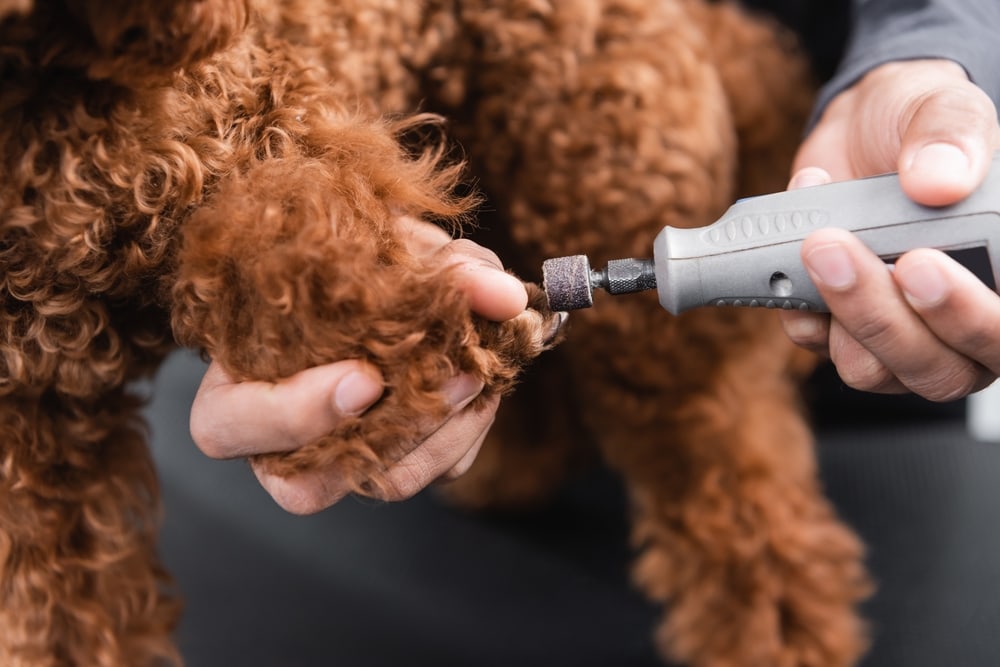
What Should You Do If You Cut Your Dog’s Nails Too Short?
Like humans, cutting a dog’s nails too short can cause them pain and discomfort. The question many new dog parents have is whether cutting their dogs’ nails too short will cause them long-term health problems.
The good news is that, in most cases, the only thing that will happen (besides some yelping) is bleeding. Below are a few steps to take if you accidentally cut the quick on your dog’s nails.
Don’t Panic
Your precious pup might yelp or cry but don’t panic. Like us, dogs have a natural clotting factor and will stop bleeding (and yelping) in a few minutes.
Apply Pressure with a Clean Cloth
Use a clean, dry cloth to apply pressure to your dog’s nail until it stops bleeding. This will slow down the flow of blood and let the platelets do their job to stop the flow of blood.
Use Corn Starch
Corn starch will help stop the bleeding faster. Put a small amount of cornstarch in a small bowl and dip their bleeding nail into it. Styptic powder is useful to have in the house for the purpose of aiding blood clotting.

When to Consider Filing Instead of Cutting
Some dog grooming experts recommend filing instead of trimming. This will eliminate the hazards of cutting, including painful (and bloody) mistakes that can be made if you have a dog that won’t sit still. Below are a few more reasons to consider filing rather than cutting your dog’s nails, including:
Your Dog Stays More Comfortable and Calmer
Many dogs are terrified to have their nails cut, primarily due to painful experiences in the past. Filing their nails may help settle this problem.
You Won’t Go Too Far
We mentioned earlier that the quick causes pain if it’s accidentally cut. When filing, the chance of cutting into the quick of your dog’s nails is eliminated.
Your Dog’s Nails Will Be Rounded and Smooth
Cutting your dog’s nails can leave them jagged and rough. Filing them leaves the nails smooth and round, which is better for your dog, family, and furniture.
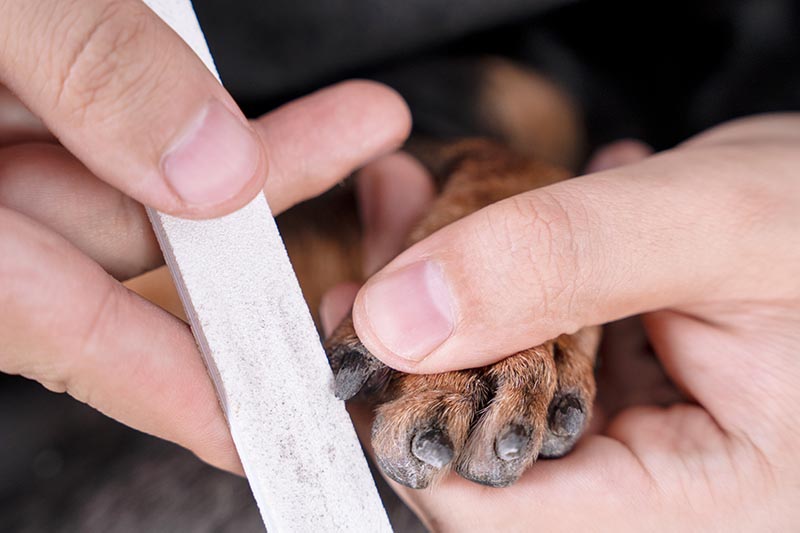
Final Thoughts
Uncut, long nails can result in ingrown nails or painful broken nails, and even add to joint wear and tear. Whichever method you choose, it’s essential that you keep your dog’s nails trimmed back. Some dogs need regular nail trims and others keep theirs naturally worn down. Check your dog’s nails regularly to see if they need a trim.
See also:
- How to Trim Puppy Nails: Vet-Approved Step-by-Step Guide
- Do Dogs’ Toenails Fall Off? Vet-Verified Causes & Prevention Tips
Featured Image Credit: Duet PandG, Shutterstock
